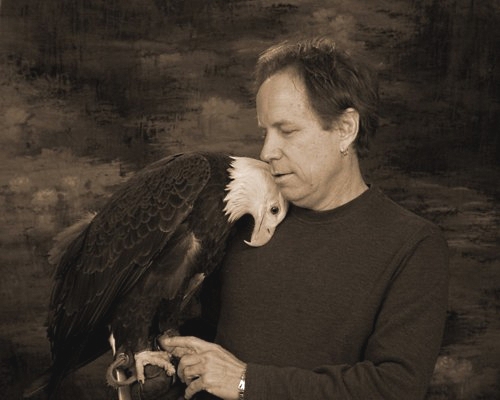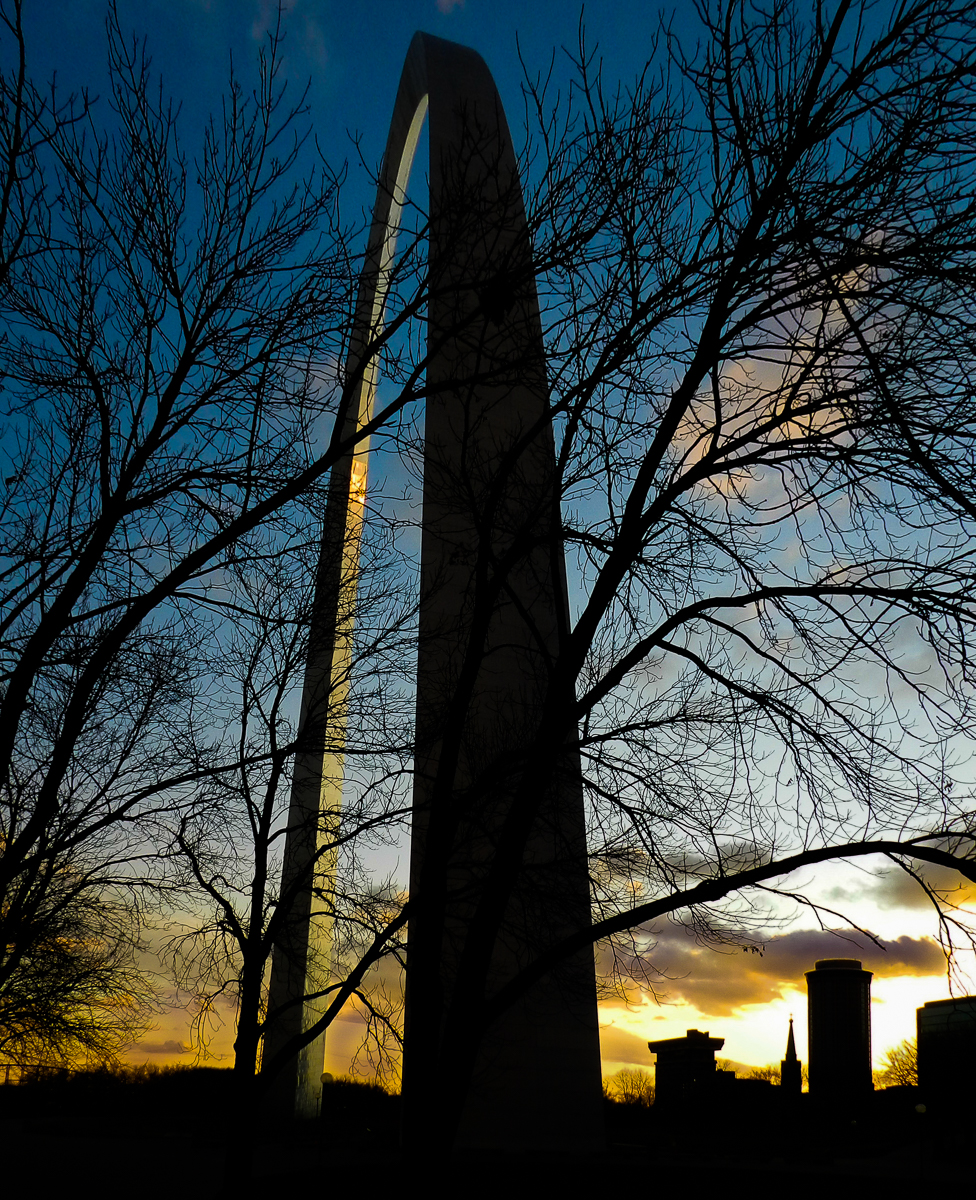
Sandwiched between downtown St. Louis to the west, and the Mississippi River to the east lies the Jefferson National Expansion Memorial. The 91 acres of the Memorial are home to the Gateway Arch, the Museum of Westward Expansion, and the Old [St. Louis County] Courthouse. The links provided above provide plenty of details about the Memorial, but briefly, the park was created to commemorate:
- The Louisana Purchase, and the subsequent westward exploration and expansion of the United States.
- The first civil government west of the Mississippi River.
- The debate over slavery raised by the Dred Scott case.
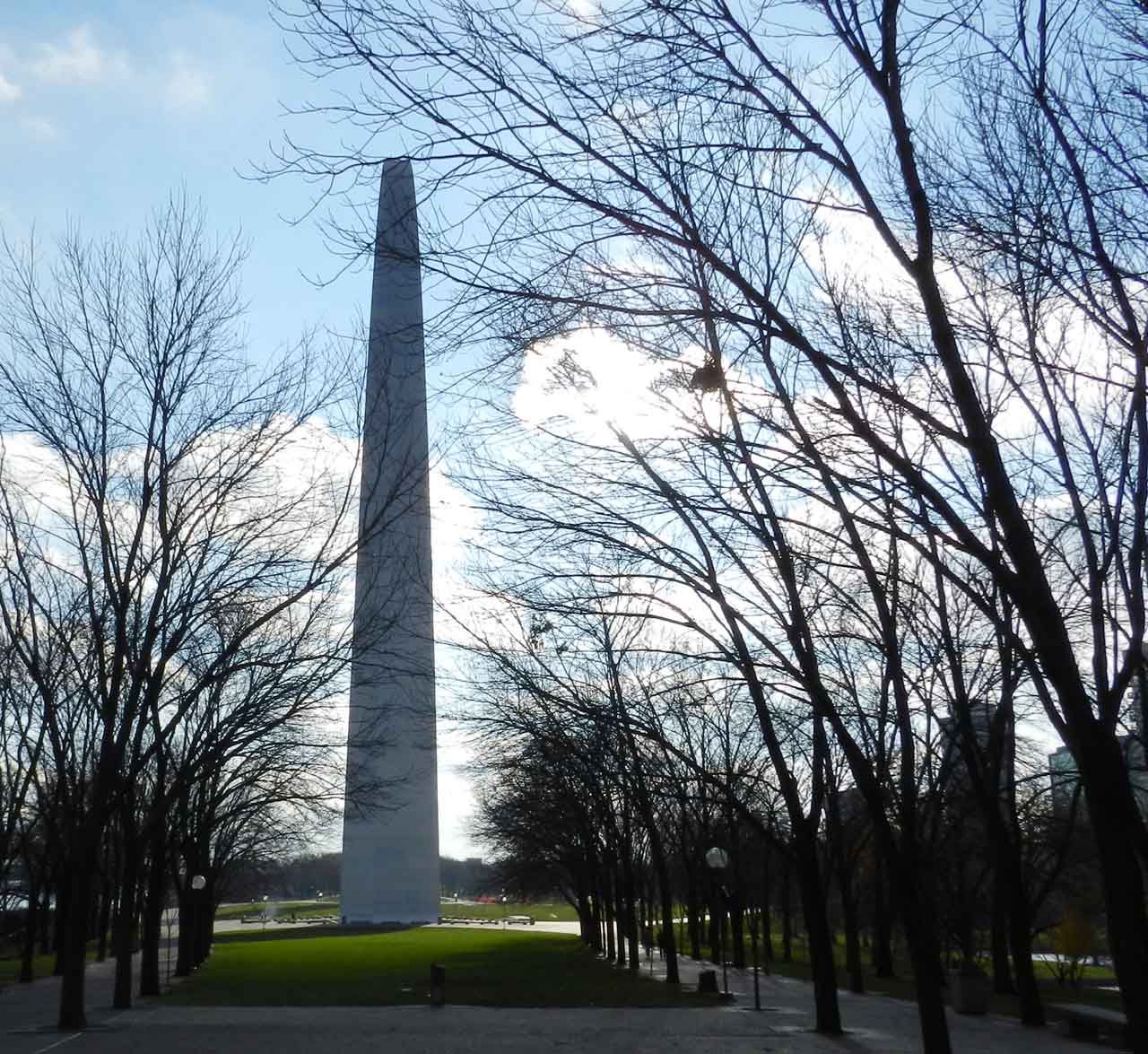
Approaching the Arch on foot from the north, one immediately notices the similarity to the Washington Monument, althought the illusion soon disappears as you move to the side of the towering arch.
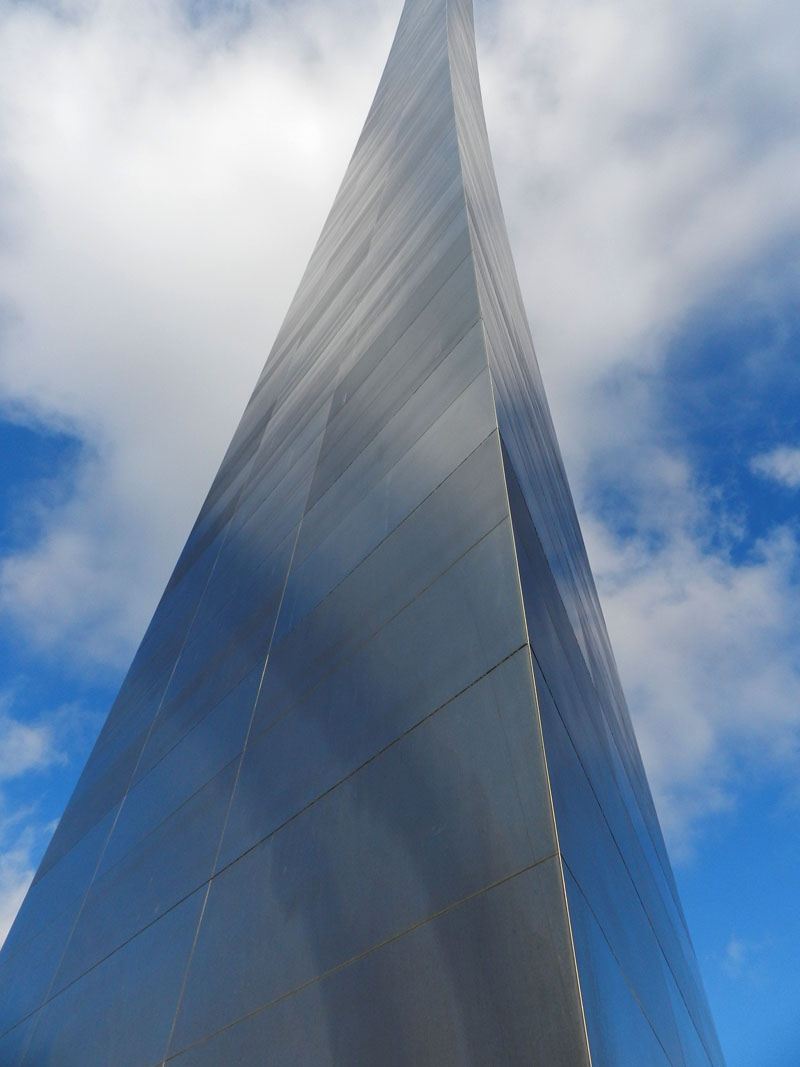
The actual size of the arch cannot be fully appreciated until you approach the very base and gaze in an upward direction. You soon find yourself jockeying for a suitable position to view the entire arch at one time.
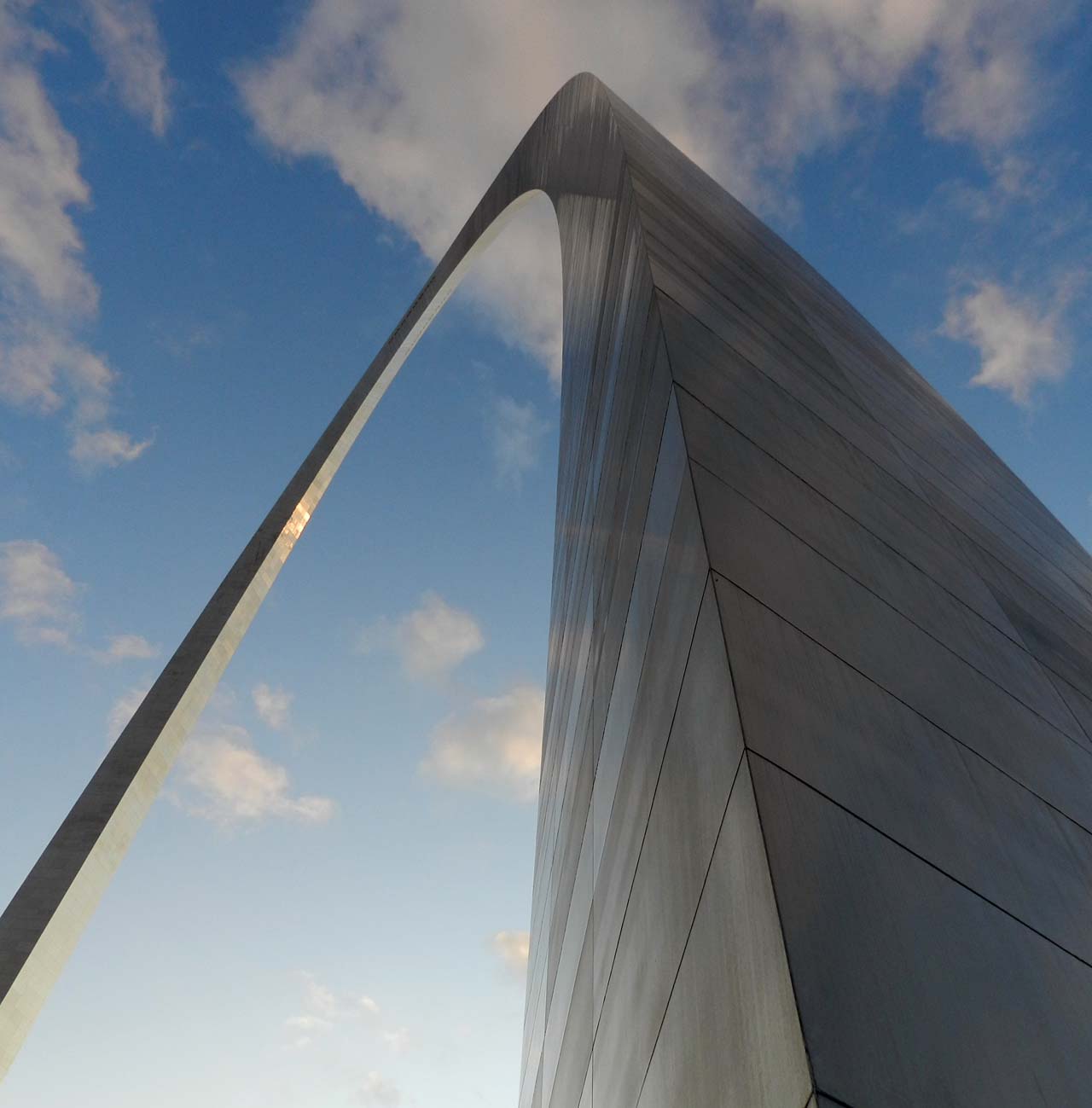
Alas, the dimensions of the arch are so vast, and the field of vision of our eyes so comparatively narrow, we come to realize that from this close proximity we can only view a portion of the arch with each gaze.
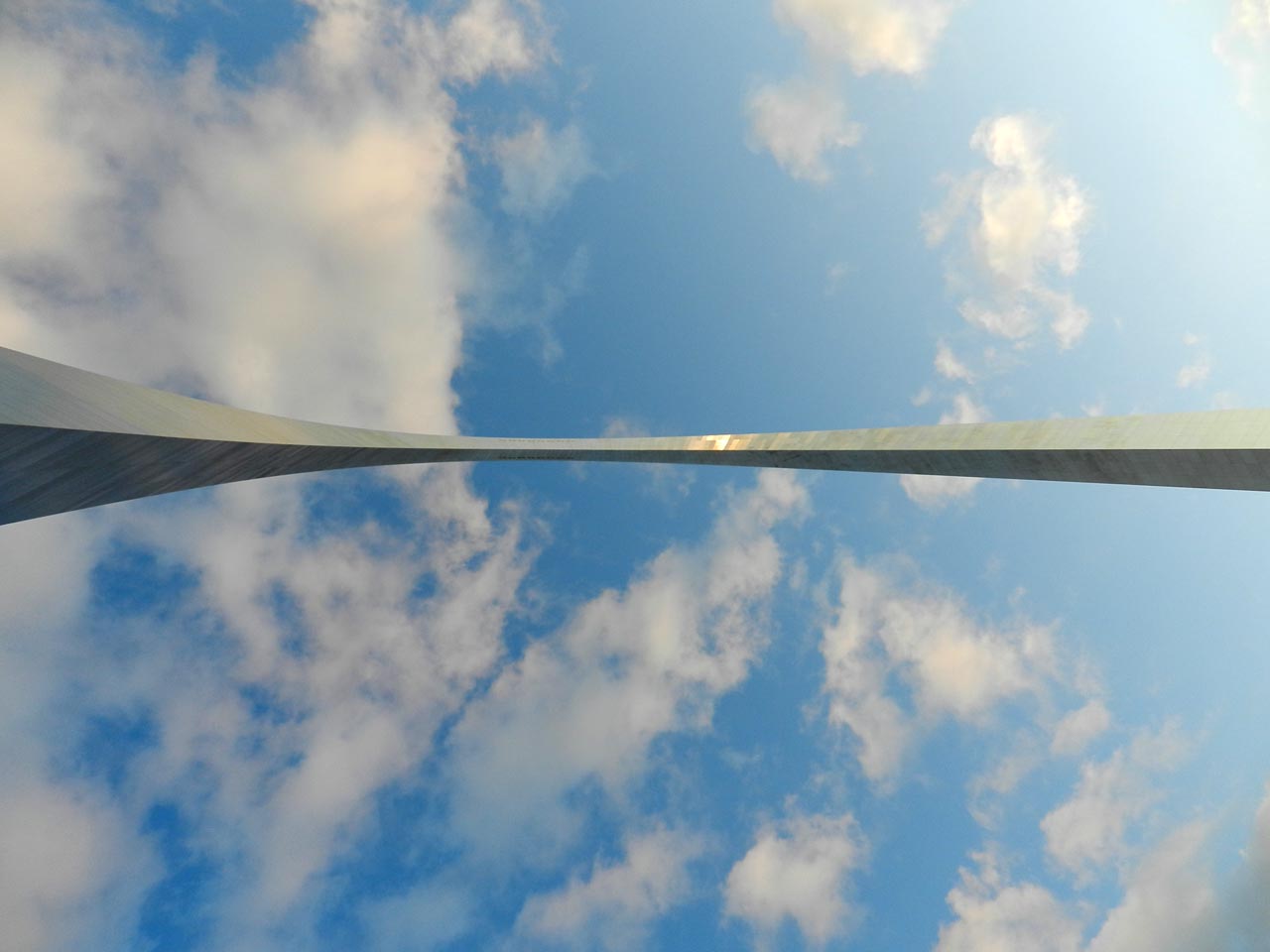
The height of the arch measures 630 feet, which exactly matches the 630 foot width of the arch at its base. It is quite an experience to stand directly underneath the apex of the arch and look up – the top of the arch seems far, far away! It occurs to me that this might be the only time in my life that I have stood directly underneath any structure this tall! So help me out – if you can think of any example of a structure that a person can stand under that exceeds the height of the Gateway Arch, please leave a comment explaining where.
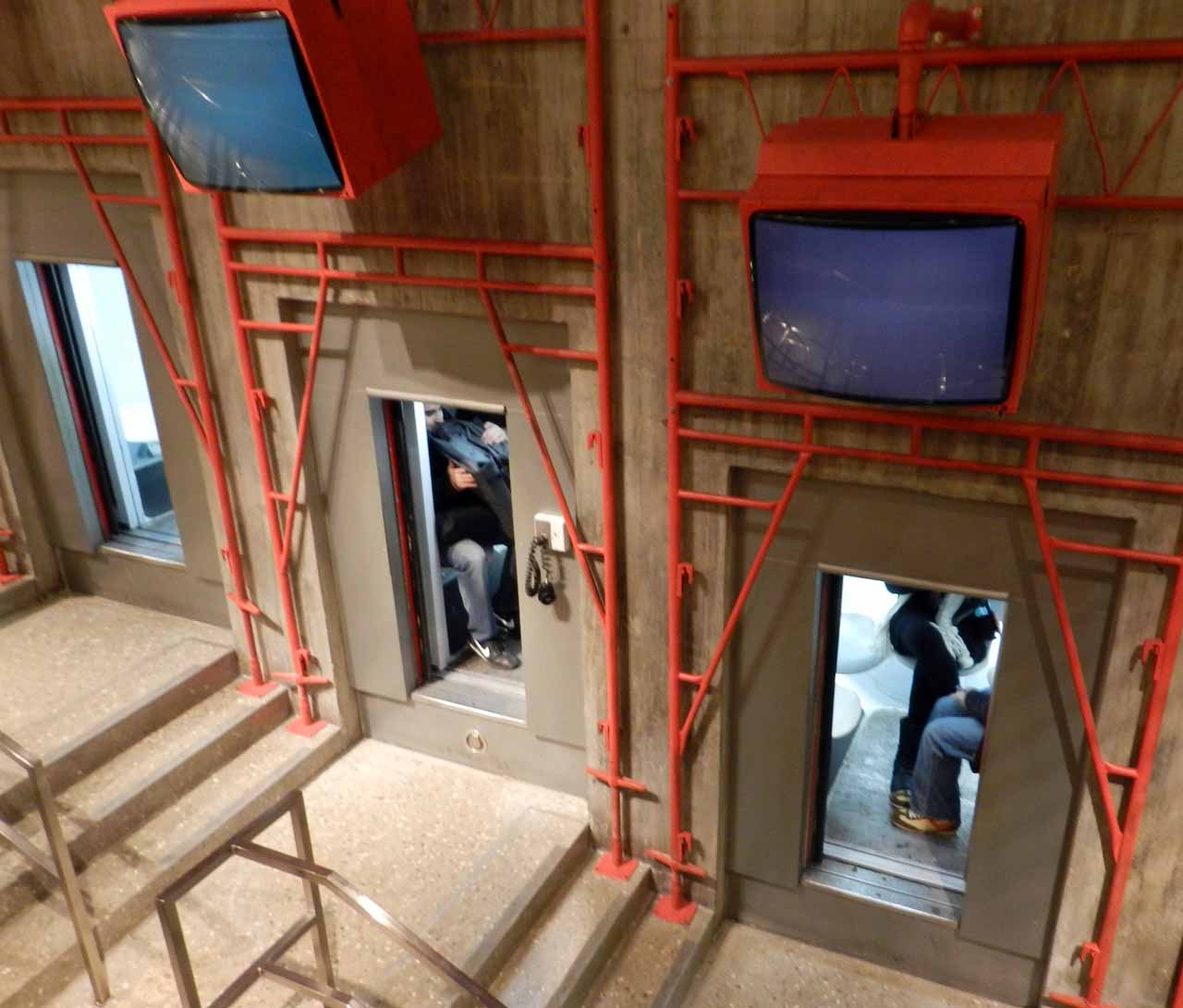
After standing underneath the arch, you might decide to ride the tram to the top of the Gateway Arch. After purchasing your tickets for the tram, you will make your way to the tram loading station, where you will enter a tram pod for the ride up the inside of the arch. There are eight tram pods on the north leg of the arch, and eight pods on the south leg. Each of the pods can hold up to five people. As you can see from the photo above, the loading zone for the tram is fairly level on the horizontal plane. Yet the tram must travel up an arch leg that is almost straight up on the vertical plane. How is this accomplished?

The tram, consisting of eight pods, is not a single structure, but rather a row of eight independently suspended units, as seen above. The pods are in lateral alignment along the horizontal parts of the journey, and stack up, one above the other on the vertical portion of the ascent.
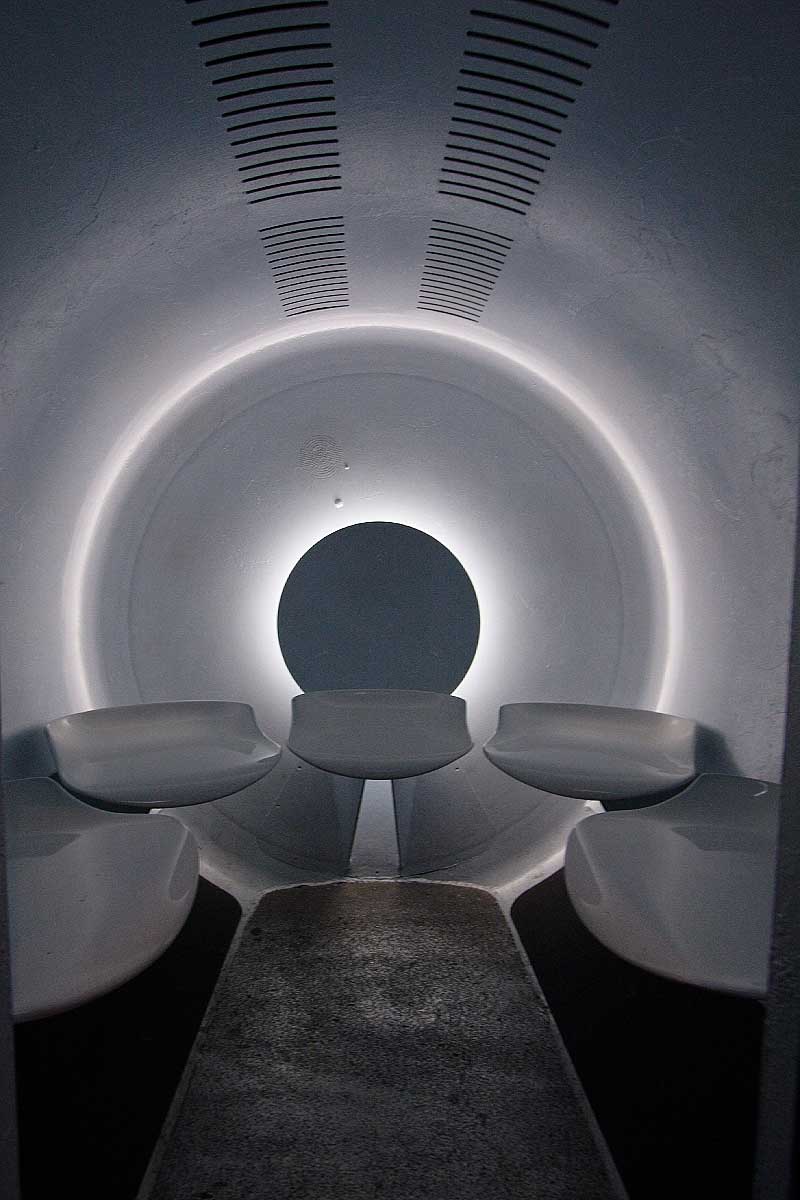
This is what the interior of the tram pod looks like. In the off-season, you may end up with a pod to yourself, but each pod holds up to five passengers, albeit snugly. The trip to the top of the Gateway Arch takes four minutes – the trip down, three minutes.
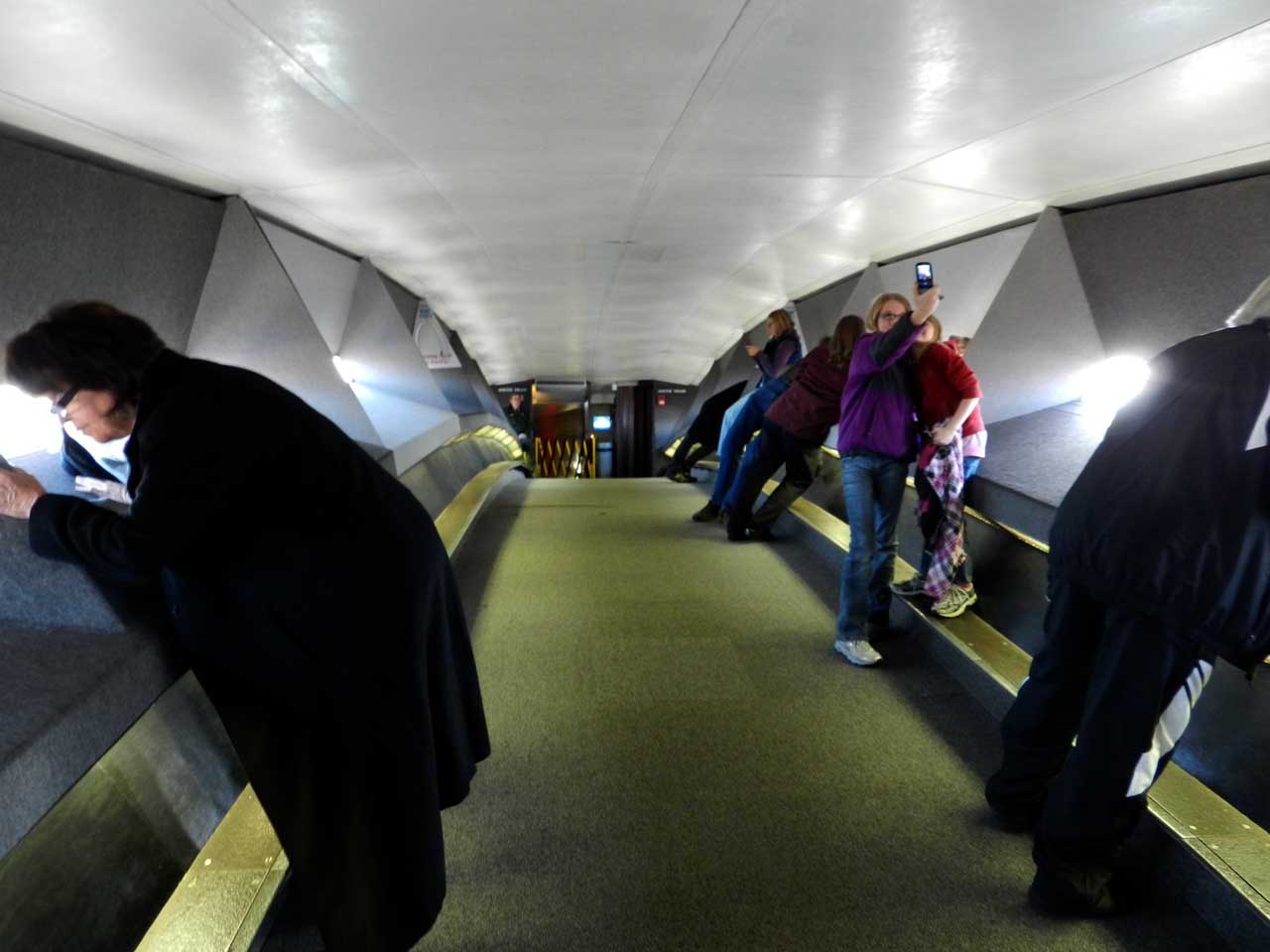
Once at the top of the arch, the tram lets you off at the observation area, where rows of windows allow you to see the surrounding countryside for many miles in each direction.
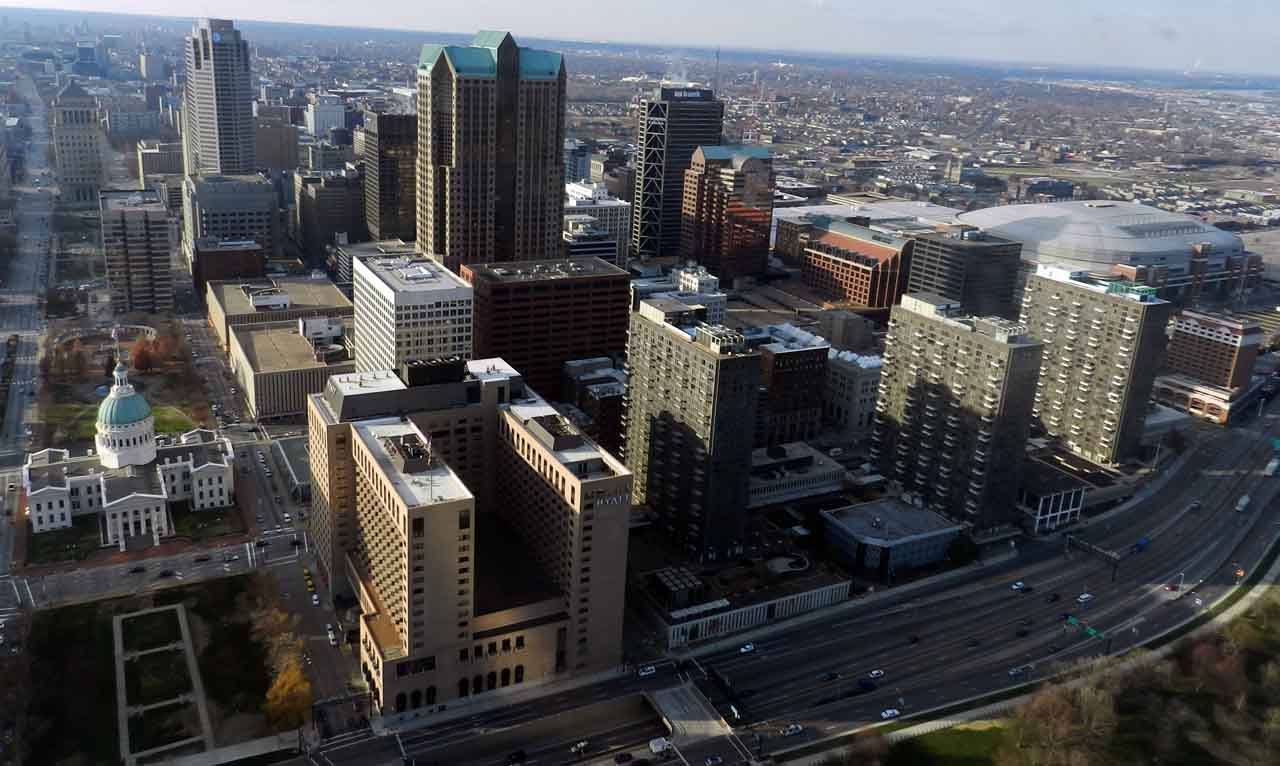
Upon gazing out of the observation windows, one is immediately struck with the realization of how high the arch towers above the St. Louis skyline. To get a sense of size, the enclosed football stadium on the right-hand side of the photo above is the Edward Jones Dome, the home of the NFL’s St.Louis Rams.
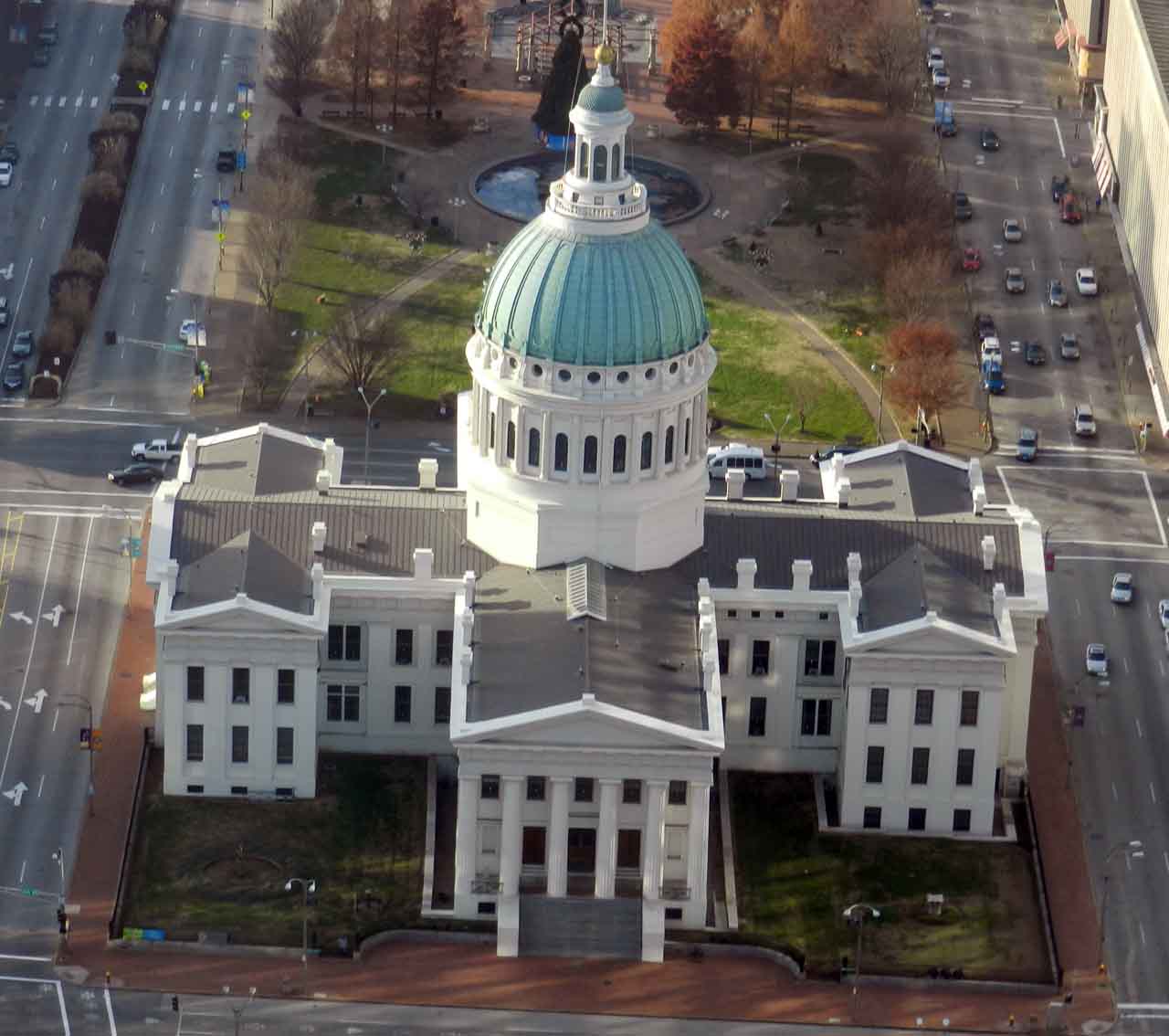
Directly to the west is the Old Courthouse, which is also part of the Jefferson National Expansion Memorial. Most notably, this was the court of original jurisdiction in the historic Dred Scott v. Sandford case, in which the U.S. Supreme Court held that Africans brought to the United States as slaves (or their descendants) were not protected by the United States Constitution, and could never be citizens.
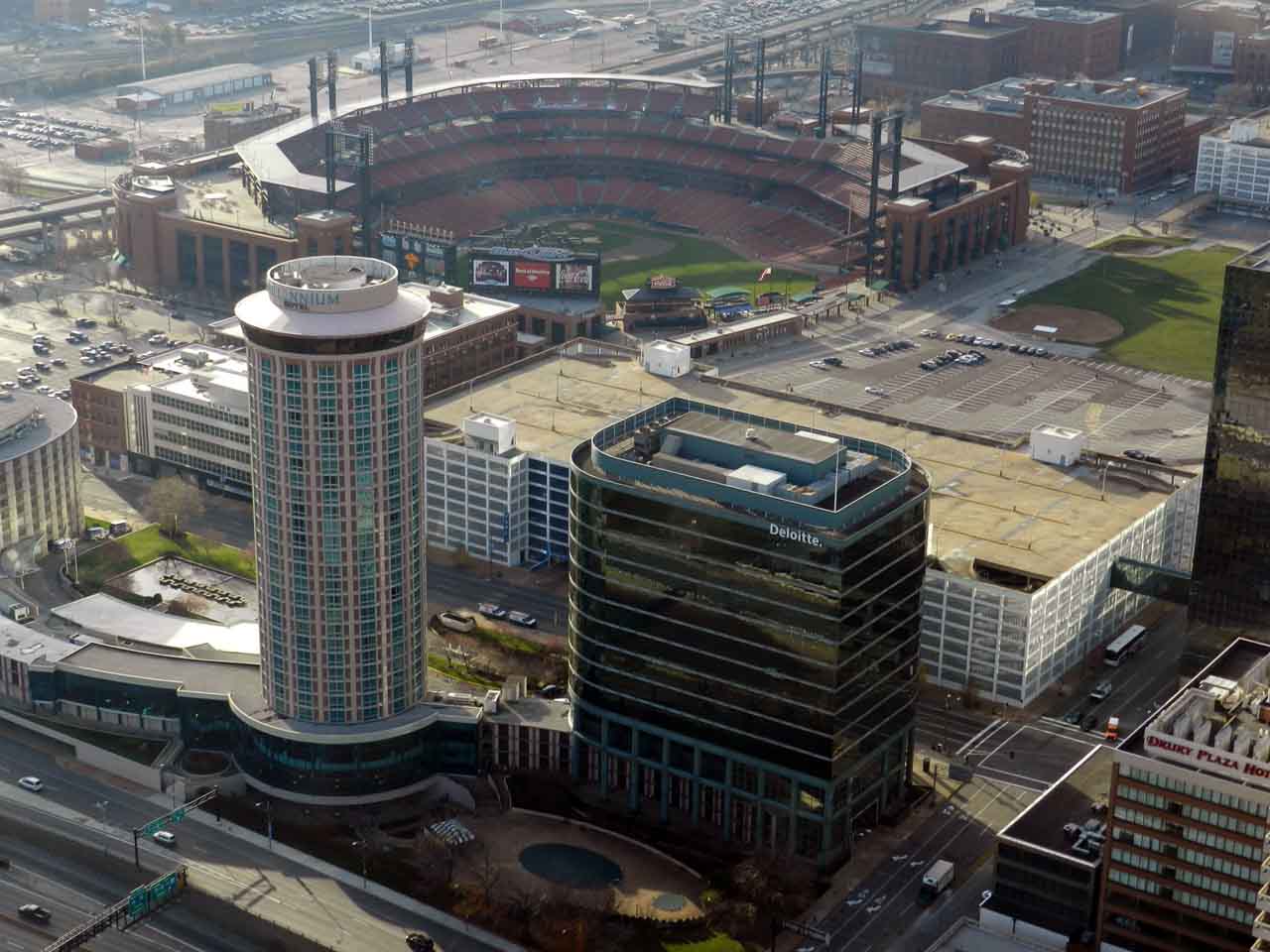
To the southwest one can see Busch Stadium III, completed in 2006 and home of MLB’s St. Louis Cardinals.
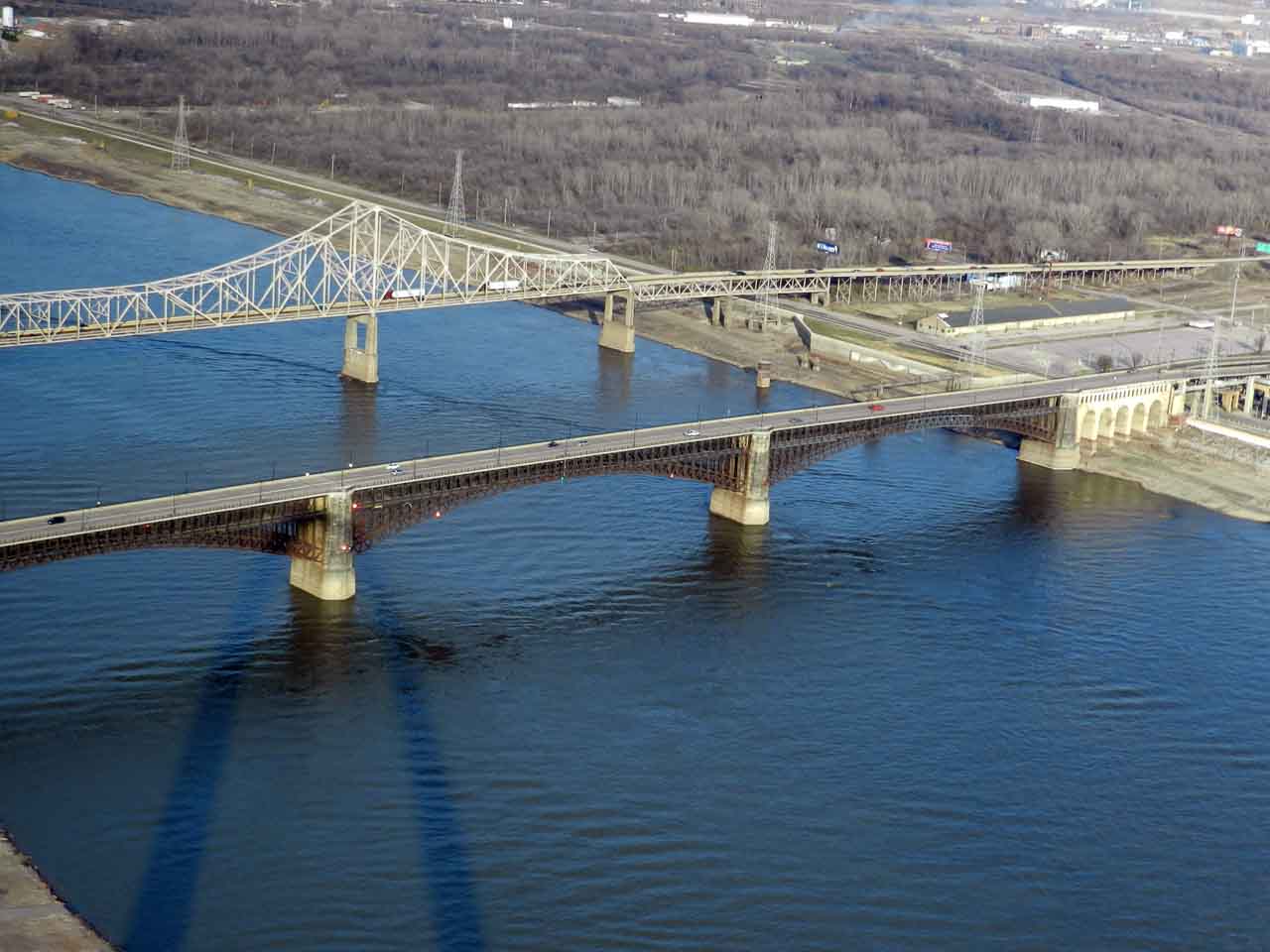
To the east one can see the mighty Mississippi River. The color of the Mississippi River is not as blue as this photo would suggest. This is simply a reflection of the blue sky above; from a land-based perspective, the river is typically brown.
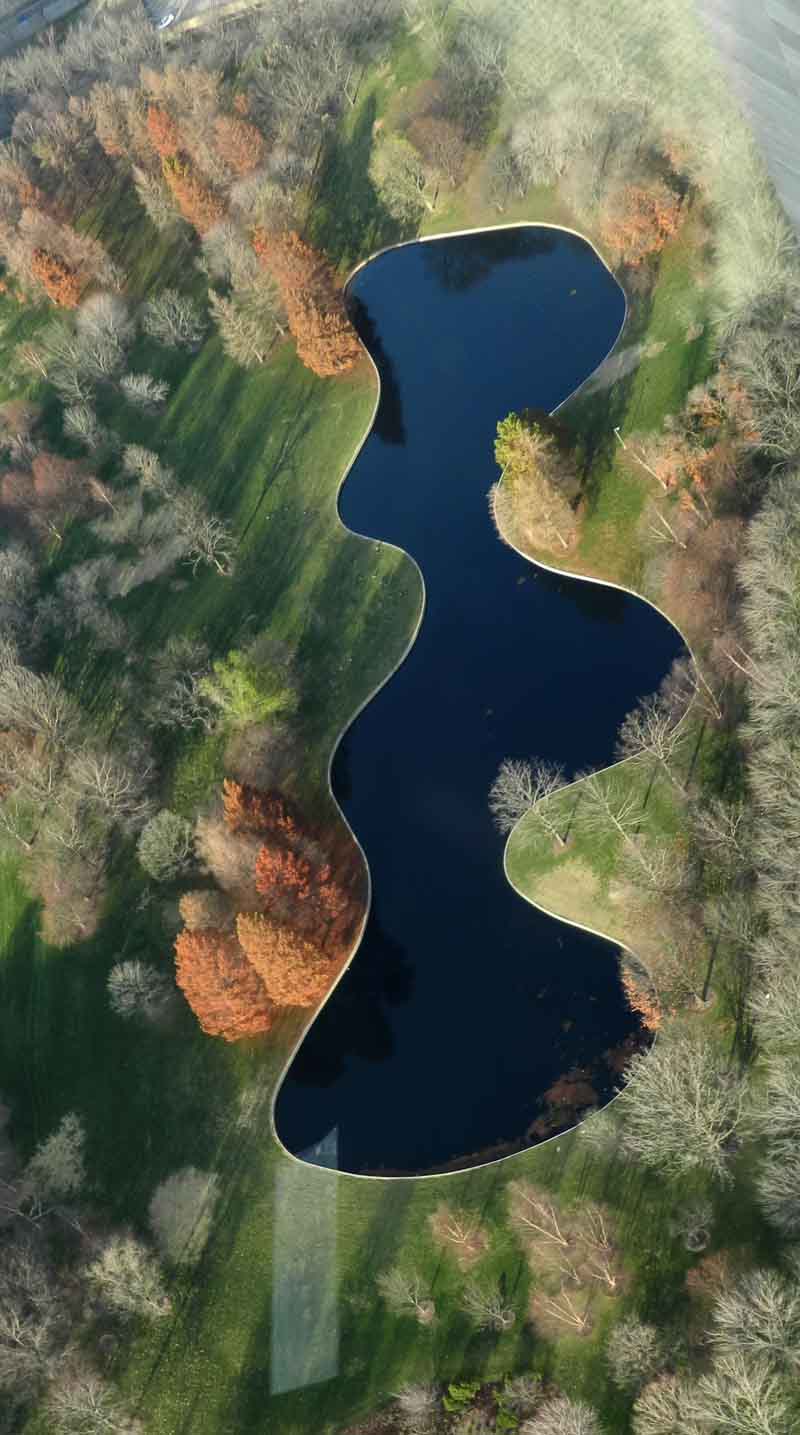
Looking directly below the arch to the northwest, lies the first of two large reflecting pools.
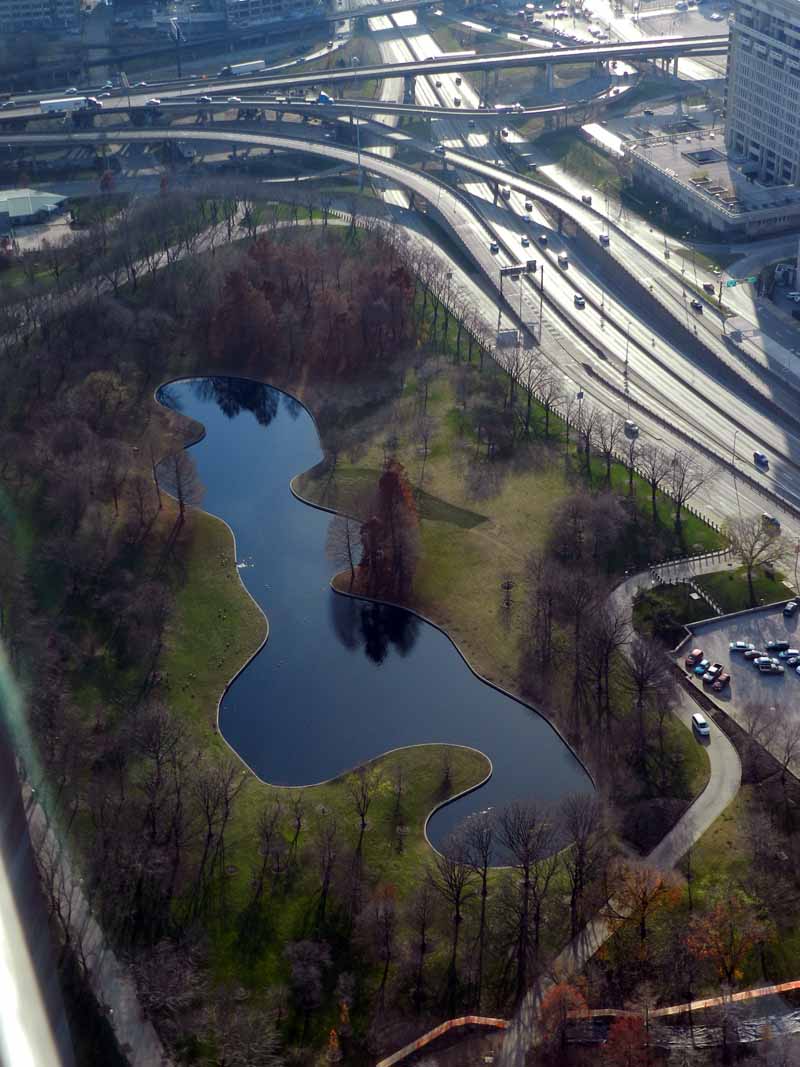
The second reflecting pool lies immediately below the arch to the southwest.
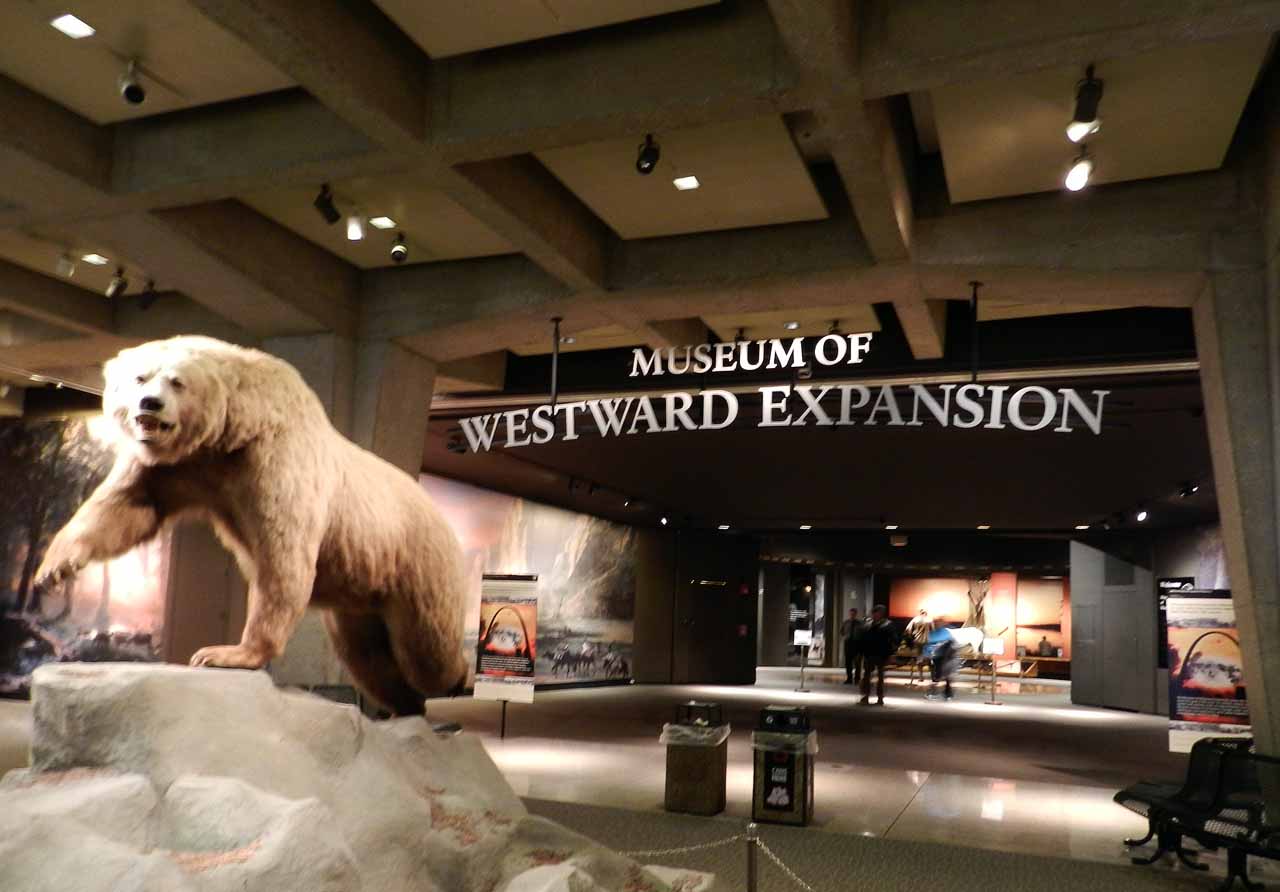
Housed below the arch in an underground facility is the Museum of Westward Expansion, documenting the growth of the United States, from inception to the present, with an impressive collection of artifacts and exhibits.
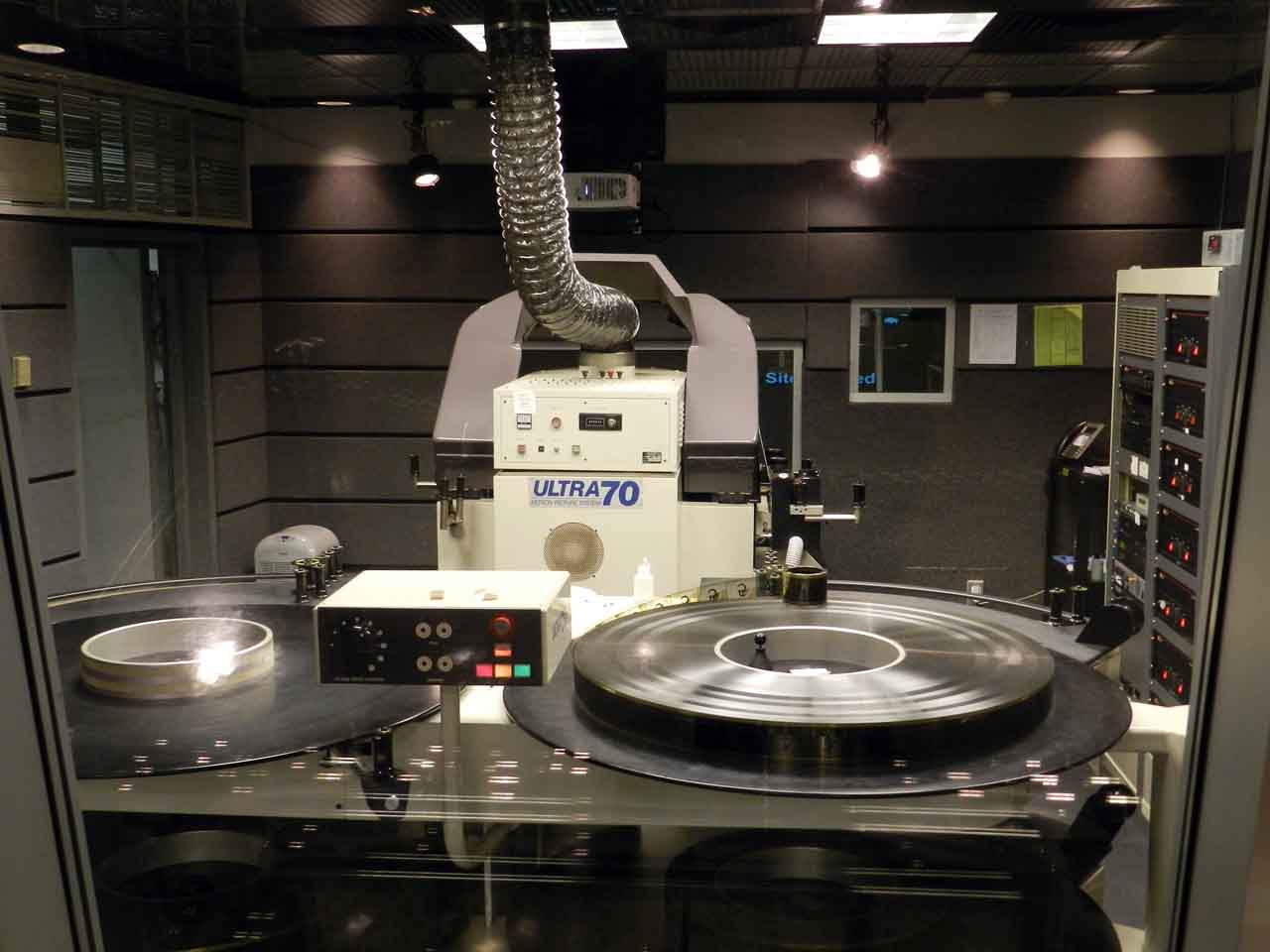
There are two theaters located within the monument. One theater shows a documentary film in which you learn how the Gateway Arch was constructed. The second theater shows an IMAX large screen format film chronicling the expedition by Lewis and Clark to document the western territories of the United States. Both films are very well done, and worth the time to see.
All-in-all, the time spend exploring the Jefferson National Expansion Memorial is time well-spent. If I didn’t think this was worth visiting, I wouldn’t have posted about it!




